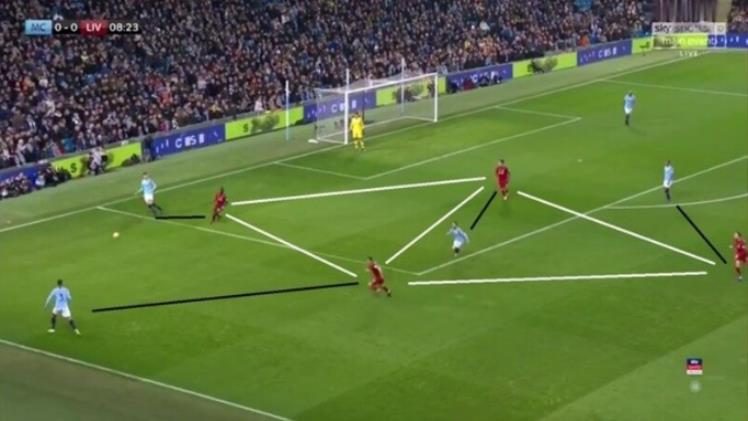Analyzing Heatmaps and Pressing Metrics: How to Understand Football in the Data Age
In modern football, performance isn’t just evaluated based on feeling, but also through data tools like heatmaps and pressing metrics. These two factors help experts understand a team’s tactical execution, physical conditioning, and playing style. The Xoilac https://www.towncraftmovie.com/ platform is helping fans get a deeper look into data-driven football analysis.
Understanding Heatmaps and Pressing Metrics in Modern Football
In the world of elite competition, data plays a crucial role in building and adjusting tactics. Two of the most common metrics are heatmaps and pressing metrics.
Heatmap – The Heat Map that Deciphers Areas of Influence
What is a heatmap in football?
A heatmap shows a player’s most active areas through a color gradient from blue to red. From this, you can determine if a player is sticking to their position or which flank the team prefers to attack.
For example, a striker’s heatmap can reveal whether they tend to move wide to the wings or stay central. This reflects their playing style and the role adjustments made by the coach.
Pressing and PPDA – A Measure of Pressing Intensity
Overview of the PPDA metric in football
PPDA (Passes Per Defensive Action) measures the number of passes an opponent makes before a team performs a defensive action. A low score indicates the team plays with an active, high-pressing style.
A team with a PPDA between 6 and 8 typically presses intensely in the opponent’s half, while a PPDA of 14 or higher indicates a deep-lying defensive style. From this, you can evaluate how proactive or passive a team’s tactics are.
See more: https://www.towncraftmovie.com/bang-xep-hang-bong-da/
The Significance of Data in Tactical Analysis
Combining heatmaps and PPDA helps paint a complete picture of a team’s performance and organization. If a heatmap shows control areas, PPDA shows defensive pressure. This helps coaches identify weaknesses and optimize their lineup.
Applying Data Analysis to Real-World Team Performance Assessment
Data analysis isn’t just limited to research; it also provides a tactical advantage in real matches.
Specific Examples from International Matches
In a Champions League semifinal between Manchester City and Real Madrid, data showed that Man City pressed extremely high with a very low PPDA. At the same time, their heatmap revealed they had perfect control of the central midfield.
In Southeast Asia, the match between Vietnam and Thailand at the AFF Cup showed that Vietnam’s midfield was at a disadvantage through a heatmap and a high PPDA, reflecting their difficulty in duels and ball control.
A useful platform for tracking these metrics is Xoilac live football, which compiles match data to help viewers easily assess tactics and performance.
Heatmaps and Pressing Help Detect Performance Decline
An unusual change in a heatmap or PPDA can reflect a drop in physical fitness or form. If a player moves less actively than usual, or the whole team reduces their pressing frequency, these are signals to pay attention to.
With clear metrics, coaches can easily identify problems and make timely adjustments instead of just relying on instinct. Data analysis also helps uncover potential rising stars among young players.
The Role of Data Analysis in Optimizing Playstyle
Many teams use data analysis to plan training, change tactics, and reduce injuries. Heatmaps help with logical player distribution on the field, while PPDA guides how to organize pressing.
It’s not just coaches—fans can also access data through tools like the supercomputer for tonight’s football predictions, which provides match predictions based on a range of deep statistics like PPDA, shots on goal, and pass accuracy.
Conclusion
Data is changing how we view football. With heatmaps and pressing metrics, not only experts but also viewers can better understand performance and tactical execution. This is an inevitable trend, where football is viewed through a logical and scientific lens.







